Barberry Thunberg "Erecta": description, planting and care
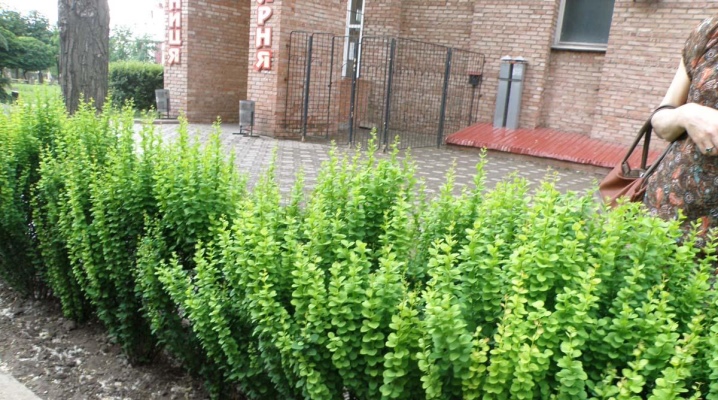
Shrubs are a common way to decorate your garden. Fans of extraordinary solutions should think about including barberry in the composition. It forms a spectacular vertical line, is able to emphasize the expressiveness of flower arrangements, and will not get lost on the lawn. The original appearance of the Thunberg barberry makes it very popular among gardeners. The shape of the plant is unusual, the shades of the foliage change more than once throughout the season. In cultivation, it is not too whimsical, it grows in different conditions, it has a large number of varieties. Among the most popular is the Erecta variety.
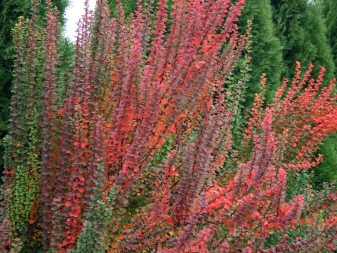
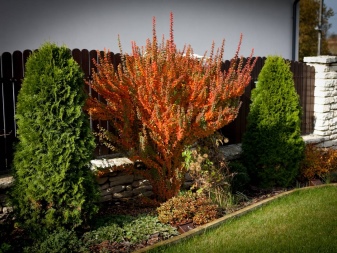
Peculiarities
Barberry Thunberg "Erecta" refers to shrubs of a tall type, the shade of the leaves is dark green.
The variety was named according to the shape of the crown, the straight shoots of which rush upward in a column. The maximum plant height reaches one and a half meters.
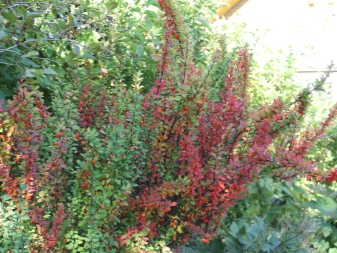
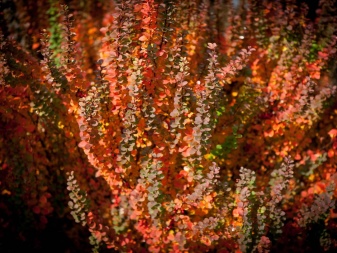
External description:
- has small branchy shoots, with a small number of thorns;
- in the spring, lush foliage adorns the branches so abundantly that it is difficult to find a gap between them;
- in the summer, tassels with flowers are formed on the bush;
- the color of the inflorescences is red outside and yellow inside the flower;
- bloom is spectacular, highly decorative;
- aroma is pronounced;
- at the beginning of autumn, flowering replaces the formation of fruits;
- berries are distinguished by a bright coral tone that stands out against the background of foliage;
- foliage by autumn changes color to deep red with an orange tint;
- berries adorn the bush until the very cold, so the area where the barberry grows looks beautiful throughout the season.
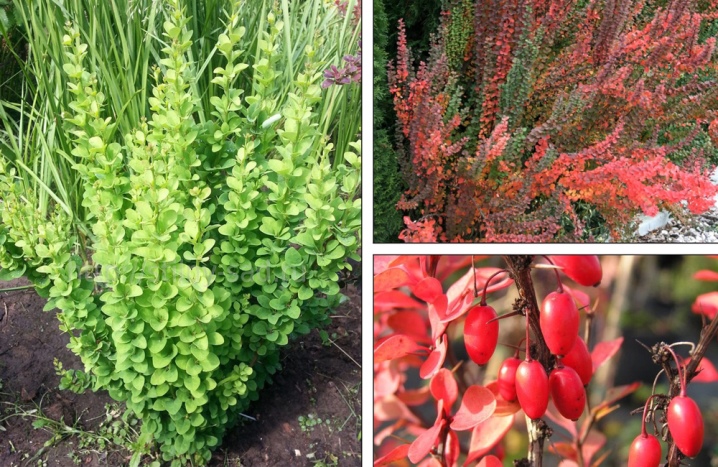
Barberry Erecta has many benefits:
- high decorativeness throughout the season makes it an irreplaceable decoration of the garden;
- the size is quite compact, the shape of the bush is original;
- can grow in partial shade, does not lose its spectacular appearance;
- has good immunity;
- perfectly tolerates frost;
- unpretentious in leaving.
For the sake of justice, it must be said about the shortcomings. The most important is thorny branches. Although this variety has not so many thorns, you will have to be careful with the branches.
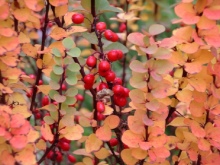
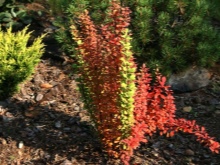
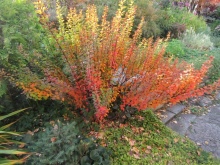
How to plant?
Gardeners admit that the Erekta shrub is not capricious, but in order for the plant to grow actively and develop well, it is necessary to take into account the peculiarities when planting. First of all, it is necessary to choose the place correctly, since the appearance largely depends on this. The shrub loves the sun, so it is best to plant it in areas of the garden where the lighting is good. If you plant the barberry in the shade, the leaves will not acquire sufficient juiciness and color saturation in the tones of purple and orange, they will simply be faded green. It is worth avoiding planting in lowlands, where water accumulates, since the plant does not like an excess of moisture.
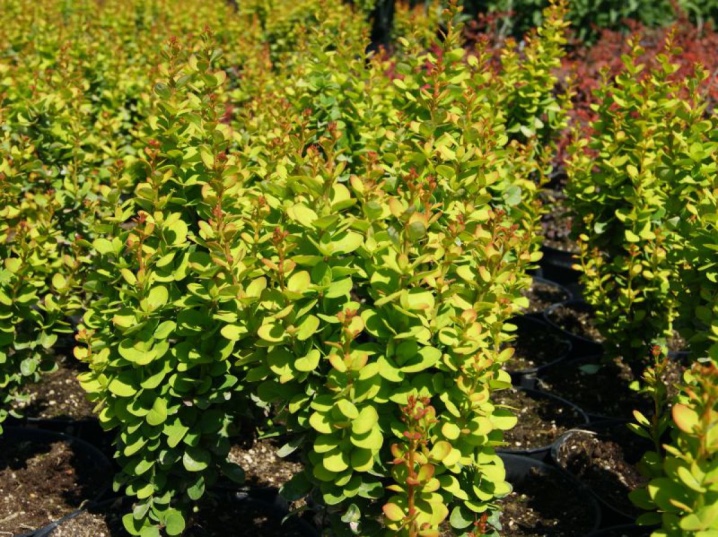
It is worth taking care of the neighbors of the plant. They can be anything, provided there is a sufficient gap between landings.
It takes about one and a half meters from the nearest crops for the barberry to develop comfortably. Please note that barberry is a delicacy for birds and insects, so you should not plant it near the house, under the windows.
The optimal planting time is spring and autumn.In the first case, the plant is planted before the bud breaks out, in the second, the seedling must have well-developed roots, otherwise there will be difficulties with wintering. A nutritious, oxygen-rich soil for planting is formed as follows:
- part of the humus;
- part of the sand;
- two pieces of turf.
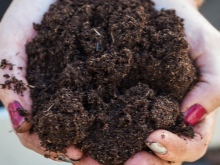
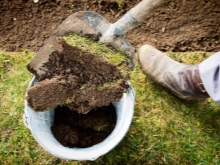

If the soil has high acidity, it should be neutralized with lime, after extinguishing it. When the bushes are planted singly, a gap of about 2 m is left between them to form a dense planting. After planting, the bush is mulched with drinkers, peat, shavings.

How to take care of it properly?
Caring for barberry is simple, but requires a certain regularity and includes a set of activities.
Watering and feeding
Carried out as soon as the shrub is planted. In the future, it should be borne in mind that "Erecta" tolerates drought better than stagnant water. Therefore, it is enough to water it twice a week in the absence of rain. In the first year, moistening occurs regularly and on time, while the condition of the soil should be monitored and irrigation should be abandoned if the soil is wet. As for feeding, you need to take into account the following nuances:
- fertilizers with nitrogen are needed in the second year of growth, ideally it should be a urea solution;
- dressings rich in microelements are introduced at least 3 times per season;
- in the summer, it should be fed with complex fertilizers of the granular type;
- in September, they are fed with compounds with potassium and phosphates.



Pruning
At the age of two, the shrub is thinned out, cutting off branches that have dried up and become weak. If this is not done, the growth and development of the plant will slow down.
If the foliage has dried up, the branches have acquired a brown tone, they are removed. Sometimes you have to clean up about? all shoots.
The first pruning is carried out in the fall, repeated as necessary. In spring, old shoots are removed, leaving about 3 cm from the ground.
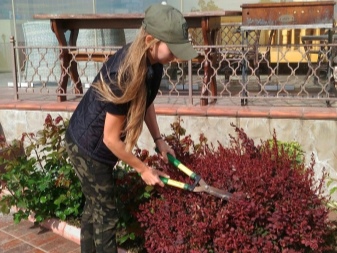
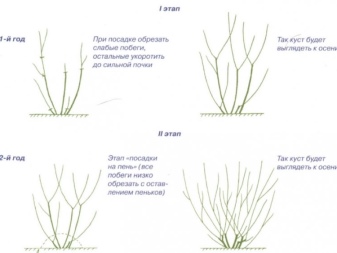
Preparing for winter
Winter hardiness of Thunberg "Erecta" is quite high, at the same time preparation for winter is being carried out. Activities are carried out usual for shrubs and trees:
- when the temperature drops to minus 3, the plant is covered;
- for this, spruce branches, thick fabric or tarpaulin are used;
- you can carry out a complete pruning and fall asleep with foliage, sawdust;
- if the branches are not cut off, they are collected in a bunch in front of the shelter, wrapped in cloth, spruce branches are laid out at the roots;
- when warm weather is established, they clean everything by opening the bush;
- after a few days, spring pruning is carried out.
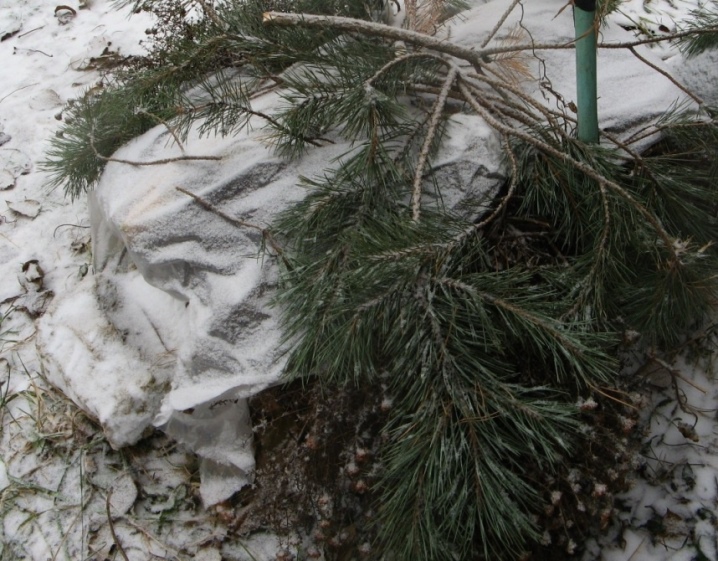
Reproduction methods
"Erecta" reproduces in the following ways:
- seminal;
- cuttings;
- rooting;
- division of the bush.
Seed method:
- fruits are used as material;
- when the fruit is ripe, seeds are taken out of it and dried;
- after drying, rinse under running water;
- put in a weak solution of manganese for disinfection;
- sown in loosened soil, deepening by 3 cm;
- seedlings will appear in the spring;
- if it did not work out in the fall, the seeds are stored in the sand in a cool room and planted in mid-spring.
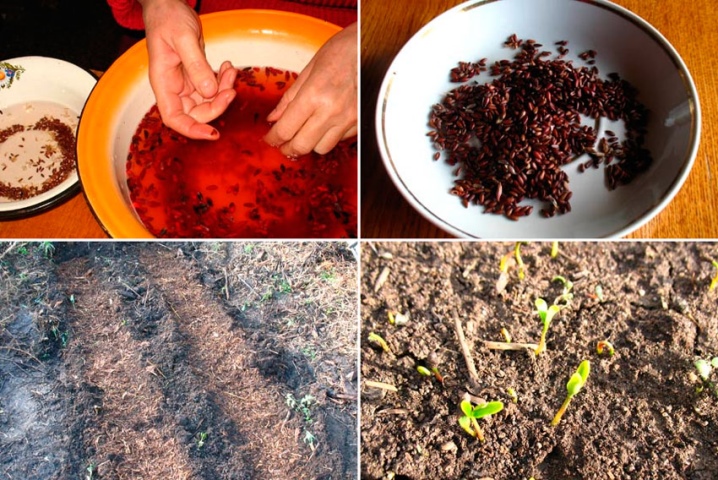
Cuttings:
- in June, parts of about 15 cm are cut from the side-type shoots;
- they are rooted in greenhouse conditions, removing excess sheets at the bottom;
- the greenhouse is ventilated, the soil is loosened regularly;
- the cuttings are hidden under the film for a faster result;
- moisturizing - as needed;
- as soon as foliage appears, airing begins;
- after rooting, they are planted in open ground.
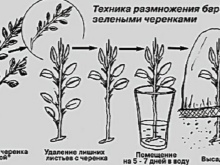
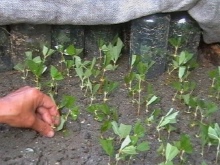
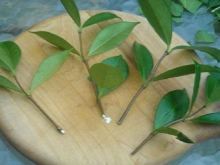
Reproduction by layering is considered the easiest:
- a depression of about 20 cm is created above the rhizome;
- cut branches are placed there, leaving a small part above the surface;
- this place is often moistened, in the fall, after rooting, it can be planted
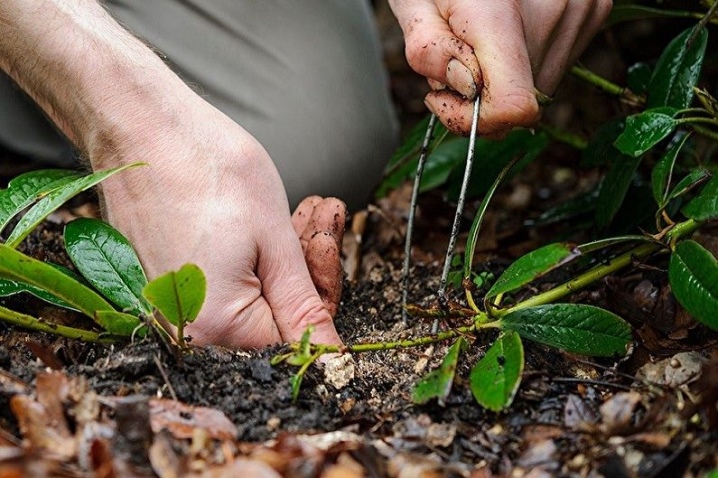
Division of the bush:
- the bush is dug up;
- divided into parts with powerful shoots;
- sit down immediately;
- often needs to be moistened, but not poured.
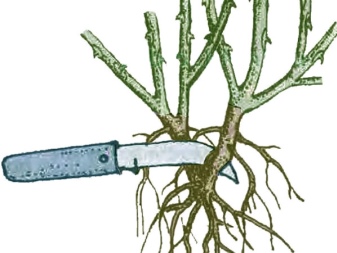
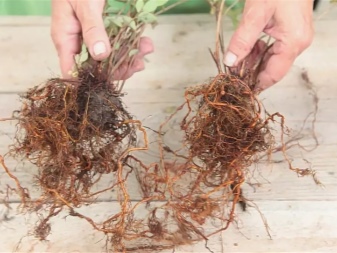
Diseases and pests
Despite good immunity, the plant often suffers from various pests, some of which are detrimental to its development. The most dangerous insect attacking the Erecta barberry is aphid. Attacks lead to dryness of foliage, branches, shoots become unviable. Preventive measures should be carried out regularly, since it is easier to prevent aphid attacks than to get rid of it. The plant is sprayed with tobacco dust.
Another dangerous pest is the flower moth.
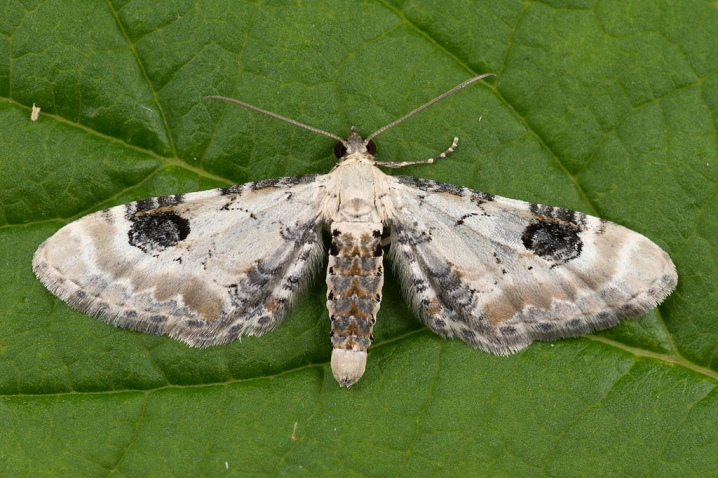
Preventive measures are powerless here, if the insect has overcome the barberry, it is necessary to spray with special chemical compositions with insecticides.
Such activities should be carried out using the protection of the skin, mucous membranes.
As for diseases, then most often barberry suffers from fungal infections, for example, powdery mildew, which captures the entire shrub... A snow-white bloom forms on the leaves. The plant should be sprayed with a composition with gray spring, when buds appear and after flowering. Infected shoots are removed. In addition to white bloom, rusty stains are dangerous. This ailment can significantly weaken the shrub, prevent it from fully developing. To get rid of the spot, the plant is treated with compounds with copper oxychloride.

Use in landscape design
Barberry "Erekta" with its columnar bushes brings completeness and a luxurious accent to the design of any site. The beauty of the shrub is pleasing to the eye throughout the season.
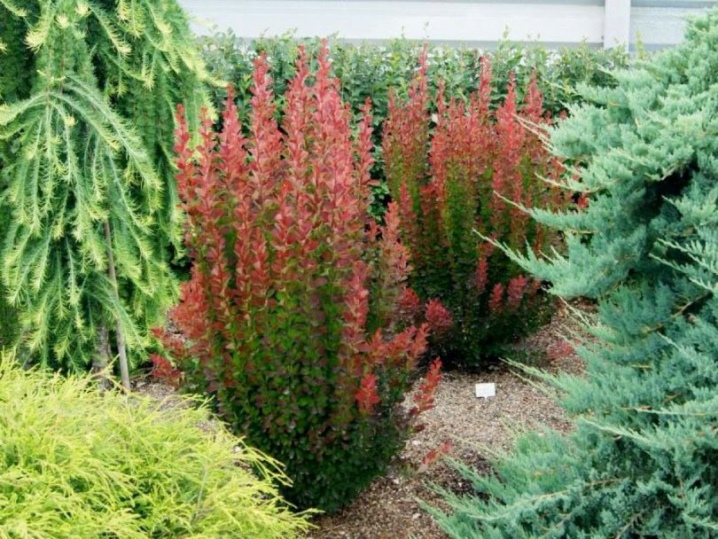
This plant is able to decorate both the landscape of a minimalist type, and successfully fit into an exuberant, rich composition.
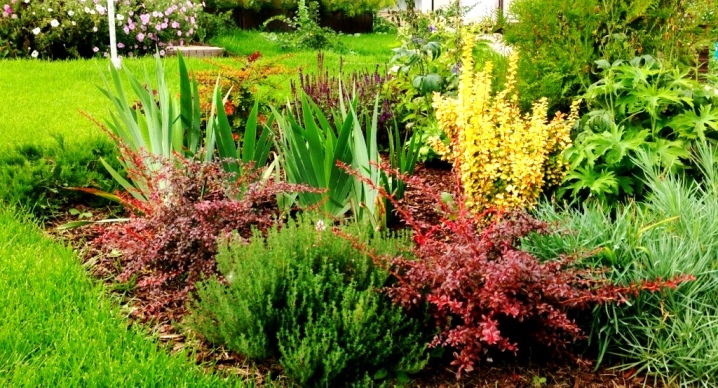
If you plant the bushes in a row, you can achieve visual expansion.
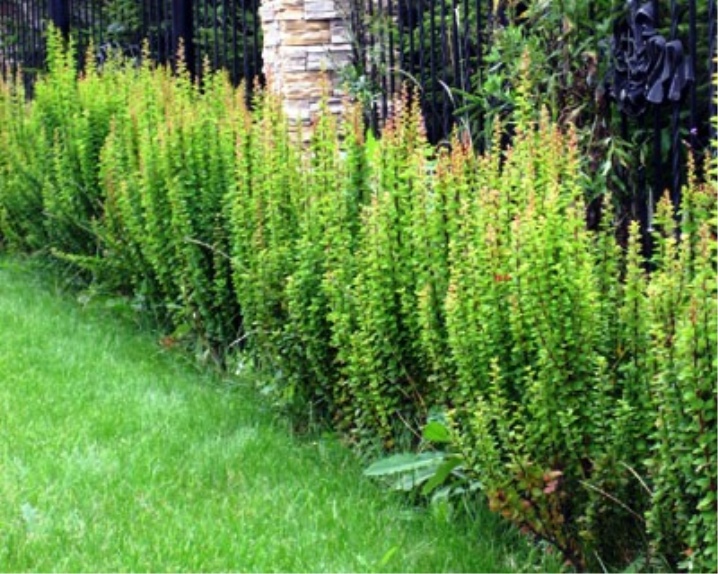
Highly decorative culture is perfectly combined with low bushes of other species. When planted on flower beds, the plant looks like the dominant link in the composition. The size and catchy bloom will effectively complement the floral ensemble, but you should not plant more than three bushes in one flower bed.
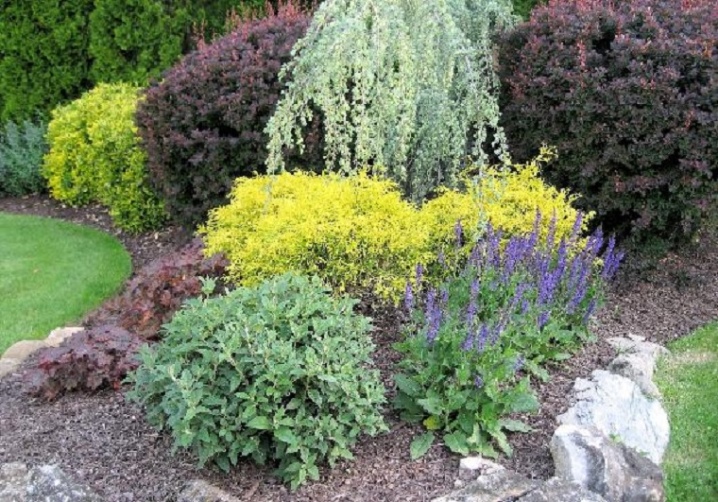
Planting around the perimeter of the garden will limit the appearance of rodents, since the barberry is quite prickly. Suitable for both singles and group compositions.
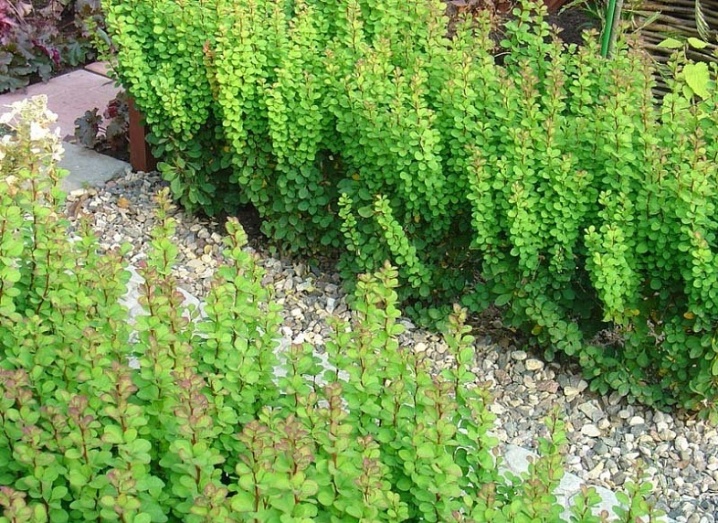
The catchy color of the variety allows it to be used in oriental design compositions. You should not get carried away with planting a bush, otherwise its presence will clutter up the site visually. At the same time, there are plots in the design of which only one variety of barberry was used.
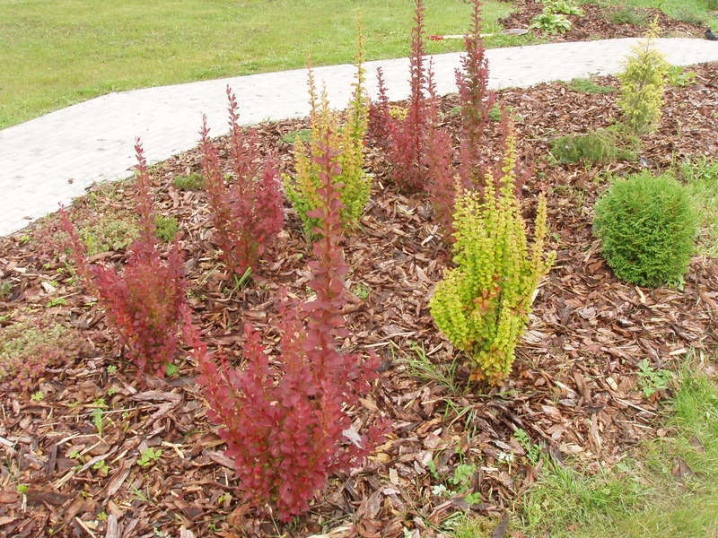
For interesting varieties of barberry, see below.



































































The comment was sent successfully.